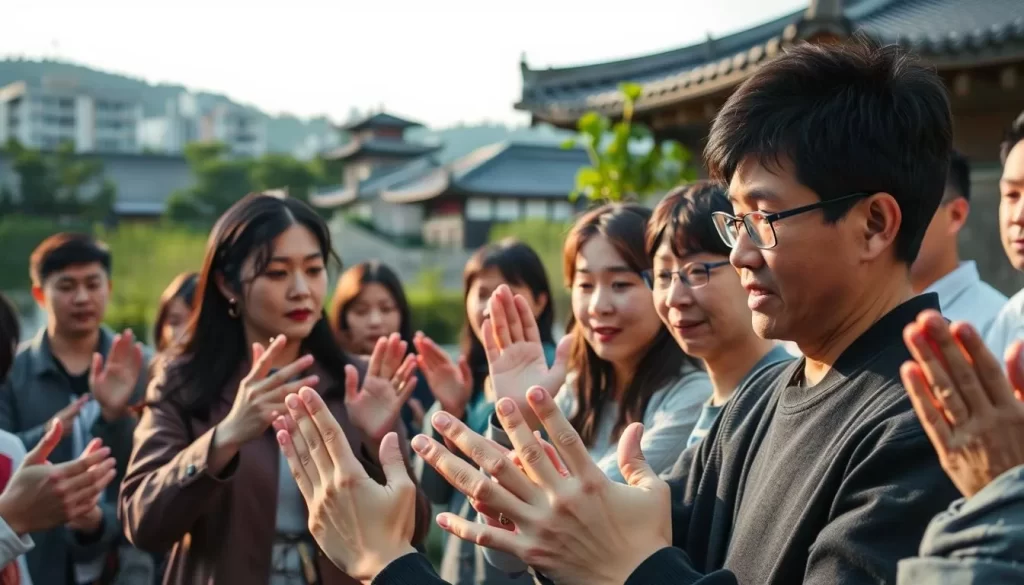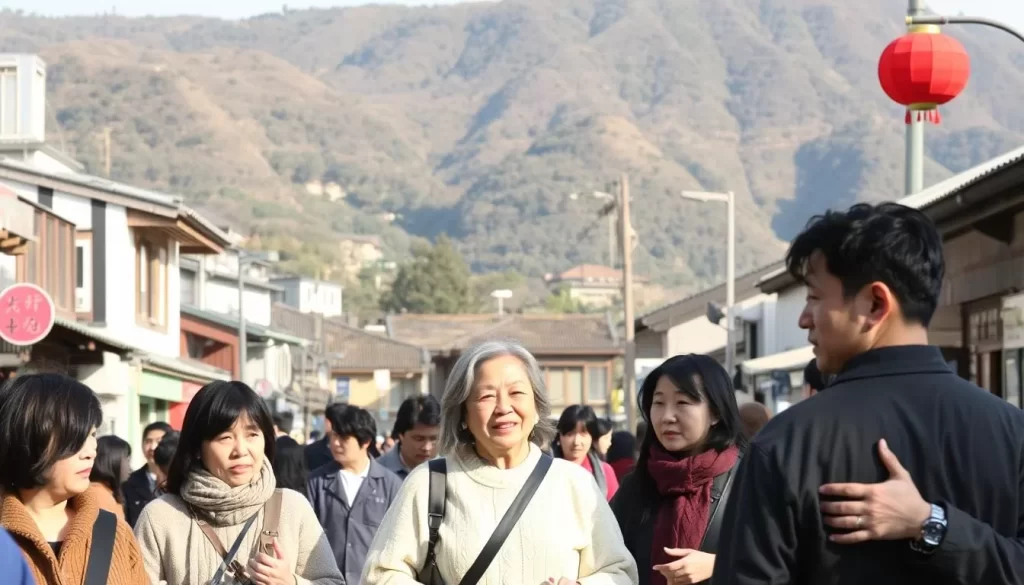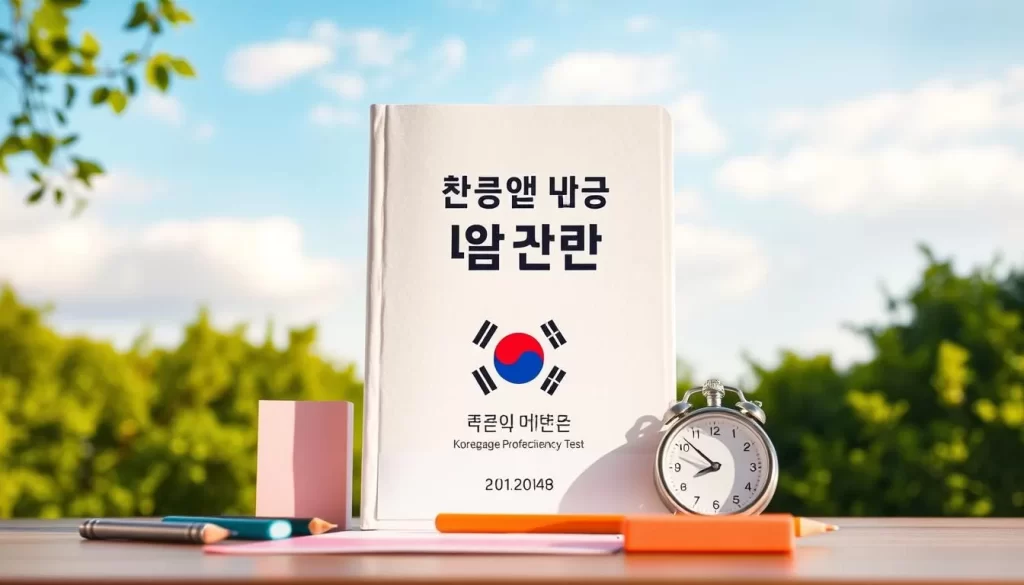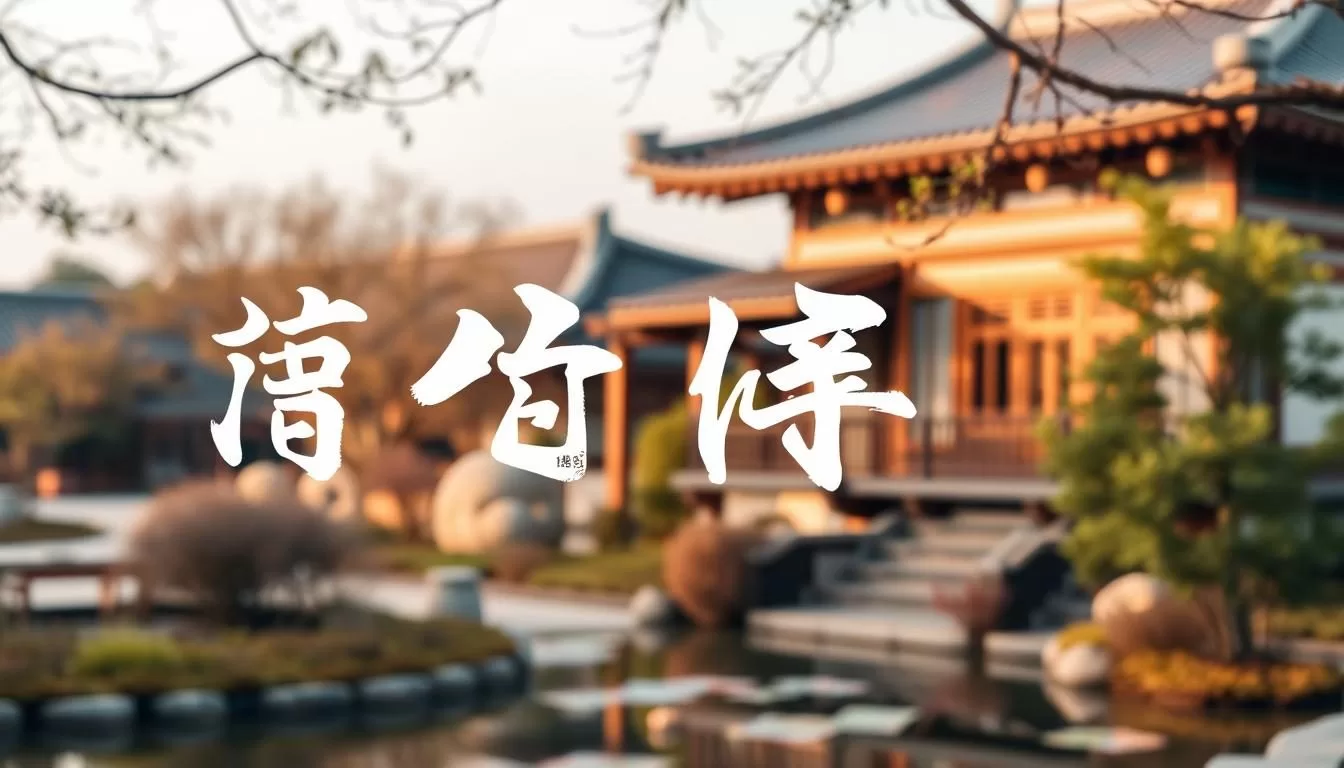You’re about to explore the linguistic landscape of Gyeonggi Province, the most populous region in South Korea, home to the vibrant capital city Seoul.
The korean language is the cornerstone of communication across the Korean peninsula, with the dialect spoken in Seoul and surrounding areas considered the “Standard Language.”
As you delve into the language and culture of this region, you’ll discover how Gyeonggi Province influences language standards across South Korea, shaping the country’s cultural identity.
Understanding the nuances of the language in this region is crucial for anyone interested in Korean culture, business, or travel, offering a gateway to deeper insights into the country’s rich heritage.
The Linguistic Landscape of Gyeonggi Province
Gyeonggi Province, a hub of cultural and economic significance in South Korea, boasts a diverse linguistic landscape shaped by its history and geography. As the most populous province, it encapsulates the complexities of language use in urban and rural settings.
Geographic and Cultural Significance of Gyeonggi Province
Gyeonggi Province surrounds the capital city, Seoul, and is a melting pot of traditional and modern cultures. This unique position influences the language and dialects spoken across the province. The geographic significance of Gyeonggi Province contributes to its role as a cultural and economic hub, attracting people from various regions.
Language Demographics and Statistics
The demographics of language speakers in Gyeonggi Province reveal a predominantly Korean-speaking population, with over 75 million speakers globally. The province’s education system promotes high literacy rates, and internet penetration ensures fluency in the standard dialect among its residents.
- The demographic breakdown shows a high percentage of native Korean speakers, alongside a growing number of multilingual residents.
- Statistical data indicates a prevalence of Standard Korean, with variations in regional dialects.
- Literacy rates in Gyeonggi Province are high, comparable to national averages in South Korea.
- Education levels correlate with language proficiency, influencing dialect usage.
Understanding the linguistic landscape of Gyeonggi Province provides insights into the dynamics of language use in a rapidly urbanizing and globalizing world.
Korean: The Official Language of South Korea
The Korean language, being the official language, holds significant cultural and social importance in Gyeonggi Province. As the primary means of communication, it unites the people and facilitates daily life, education, and governance.
Status and Recognition of Korean in Gyeonggi Province
In Gyeonggi Province, Korean is the predominant language, used in all official contexts, including government, education, and media. The province’s linguistic landscape is largely homogeneous, with Korean being the first language for the vast majority of the population. This widespread use reinforces its status as the official language.
The language policy in Gyeonggi Province supports the use of Korean, ensuring that all public services and information are accessible to everyone. This includes signage, public announcements, and official documents.
Korean Sign Language and Accessibility
Korean Sign Language (KSL) is vital for the deaf and hard-of-hearing community in Gyeonggi Province. It is gaining prominence as technology advances, making digital platforms more inclusive. Accessibility initiatives are being implemented to promote KSL in public spaces, education, and media.
Technology is enhancing accessibility for sign language users, with advancements in video conferencing tools and digital sign language avatars. Educational programs are also being developed to teach KSL to both deaf and hearing people, fostering a more inclusive society.

Historical Development of the Korean Language
As you explore the history of the Korean language, you’ll discover the significant events and influences that have shaped it over time. The development of Korean is a complex process that spans centuries, reflecting the country’s cultural, social, and political changes.
Origins of Hangeul and Hunminjeongeum
The creation of Hangeul, the Korean alphabet, is a pivotal event in the history of the Korean language. In 1443, King Sejong introduced Hangeul through the Hunminjeongeum, a document that explained the new writing system. This innovation was designed to be simple and accessible, contrasting with the complex Chinese characters that were previously used. Hangeul’s introduction marked a significant turning point in Korean linguistic history, enabling widespread literacy among the population.
Evolution of Korean Through the Centuries
Over time, the Korean language continued to evolve, influenced by various factors including geographical location, cultural exchange, and political changes. The Middle Korean period, from the 11th to the 16th century, laid the groundwork for modern Korean. By the 17th century, the language had incorporated new vocabulary and expressions. The 20th century brought further changes, with the Korean War leading to differences in language between North and South Korea.
| Period | Significant Events | Impact on Language |
|---|---|---|
| Middle Korean (11th-16th century) | Influence of Chinese culture | Adoption of Chinese characters |
| 17th century | New vocabulary and expressions | Enrichment of Korean vocabulary |
| 20th century | Korean War (1950-1953) | Divergence between North and South Korean language |
Standard Korean (Pyojuneo) and Gyeonggi Province
Understanding the nuances of the Gyeonggi dialect is crucial for grasping the evolution and characteristics of Standard Korean. The Gyeonggi dialect, closely related to the Seoul dialect, has significantly influenced the development of Standard Korean.
Gyeonggi Dialect as the Foundation of Standard Korean
The Gyeonggi dialect serves as the foundation for Standard Korean due to its widespread use and historical significance. As the dialect that is most similar to the standard form, it has played a crucial role in shaping the country’s linguistic standards. You will discover that the Gyeonggi dialect’s influence on Standard Korean is evident in its pronunciation and sentence structures.
- The Gyeonggi dialect’s phonological features, including intonation patterns, are a key aspect of Standard Korean.
- Grammatical characteristics, such as verb conjugations and sentence endings, define the Gyeonggi dialect.
- Unique vocabulary and expressions specific to the Gyeonggi dialect have been incorporated into Standard Korean.
Characteristics of the Gyeonggi Dialect
The Gyeonggi dialect has distinct characteristics that set it apart from other regional dialects. For example, its pronunciation tendencies and intonation patterns are notable. You will learn that the dialect’s rhythm, speed, and tonal qualities differ from other dialects, making it unique. The influence of urbanization and population movement has shaped the dialect’s evolution over time, leading to variations within Gyeonggi Province itself.

As you explore the Gyeonggi dialect further, you’ll understand how it ends up influencing the way Standard Korean is perceived and used today.
Regional Dialects Across South Korea
You’ll find that South Korea’s regional dialects are not just variations in pronunciation, but also carry distinct cultural identities. These dialects are a vital part of the country’s linguistic heritage, shaped by geographical, historical, and cultural factors.
Gangwon, Chungcheong, and Jeolla Dialects
The Gangwon dialect, spoken in the Gangwon province, has distinct vocabulary and pronunciation that differ from Standard Korean. In contrast, the Chungcheong dialect is known for its gentle intonation, often described as soft and polite. The Jeolla dialects, spoken in the Jeolla provinces, have unique grammatical structures and vocabulary that set them apart from other dialects. These regional dialects not only reflect the local culture but also contribute to the rich tapestry of the Korean language.
Gyeongsang and Jeju Dialects
The Gyeongsang dialect, spoken in the southeastern provinces, is known for its strong intonation and pitch accent system, making it the only Korean dialect that preserves tonal distinctions. The Jeju dialect, on the other hand, is a critically endangered language variety that UNESCO recognizes as being significantly different from mainland Korean dialects. Due to geographical isolation, the Jeju dialect has developed distinctive vocabulary influenced by various languages, including Mongolian, Chinese, and Japanese. This unique linguistic heritage is a valuable part of South Korea’s cultural identity.
The Gyeongsang dialect’s distinctive features, such as its pitch accent system and tendency to drop initial vowels in compound words, set it apart from Standard Korean. Meanwhile, the Jeju dialect’s unique vocabulary and grammatical structures make it challenging for mainland Koreans to understand without exposure or study. Understanding these dialects is crucial for appreciating the regional identities and cultural heritage they represent.
Comparing South and North Korean Language Variants
As you explore the Korean language, you’ll notice differences between the South and North. The division between South and North Korea has resulted in distinct linguistic variations, shaped by different cultural, political, and historical contexts.
Mutual Intelligibility and Regional Accents
The Korean language spoken in South and North Korea shares a common grammatical structure, but differences in vocabulary and pronunciation can create communication challenges. You might find that while speakers from both regions can understand each other to some extent, regional accents and specific terms can cause confusion. For instance, the standard language in South Korea is based on the Gyeonggi dialect, whereas North Korea uses a standardized form based on the Pyongyang dialect.
Differences in Foreign Loanwords and Vocabulary
Foreign influences have shaped the vocabulary in both regions differently. You can observe that South Korea has incorporated many English loanwords, especially in technology, entertainment, and business. In contrast, North Korea prefers native Korean terms or words influenced by Russian and Chinese. For example, South Koreans use “아이스크림” (ice cream), while North Koreans use “얼음보숭이” (frozen cream). This divergence reflects the distinct cultural and political influences each region has experienced.

Cultural and Social Influences on the Korean Language
As you explore the Korean language, you’ll discover how deeply it’s intertwined with the nation’s culture and societal values. The way Koreans communicate is not just about the words they use, but also about the cultural context and social norms that shape their language.
Traditional Customs and Superstitions in Language Use
Traditional customs and superstitions significantly influence the Korean language. For instance, certain words or phrases may be avoided or used specifically due to their auspicious or inauspicious connotations. You might find that some expressions are tied to specific customs or rituals, reflecting the deep-rooted cultural heritage of Korea.
| Cultural Influence | Language Example | Significance |
|---|---|---|
| Auspicious words | Using specific characters or phrases during New Year | Bring good luck |
| Superstitions | Avoiding certain numbers or words | Prevent bad luck |
K-pop, Dramas, and Global Cultural Impact
The global rise of K-pop and Korean dramas has significantly impacted the Korean language, introducing new terms and phrases worldwide. K-pop groups like BTS have popularized Korean words internationally, making the language more accessible to global audiences. You’ll notice how entertainment companies based in Gyeonggi Province have become unofficial ambassadors of the Korean language through their global content.
The influence extends to how younger generations speak, blending traditional and modern vocabulary. Social media has accelerated the spread of Korean expressions among international fans, who incorporate these phrases into their own languages. Examples include “fighting” (파이팅) as an encouragement and “aegyo” (애교) for cute behavior, showcasing the dynamic influence of K-pop on global language trends.
Government Initiatives and Language Policies
Standardizing the Korean language is a key focus of the South Korean government’s language policies. The government has established several institutions and programs to promote and regulate the use of the Korean language.
National Institute of Korean Language
The National Institute of Korean Language plays a vital role in developing and implementing language policies. It is responsible for compiling dictionaries, establishing language standards, and promoting the use of standard Korean. This institute ensures that the language is used consistently across various contexts, including education and official communications.
TOPIK and Language Proficiency Standards
Another key initiative is the Test of Proficiency in Korean (TOPIK), which serves as a benchmark for language proficiency. TOPIK benefits both native speakers and learners by providing a standardized measure of their Korean language skills. Here are some key aspects of TOPIK:
- TOPIK establishes standardized measurements for Korean language ability based on the standard language of Gyeonggi Province.
- The test has six proficiency levels, providing clear benchmarks for language learners and institutions worldwide.
- TOPIK evaluates reading, writing, and listening skills using standard Korean based on the Seoul-Gyeonggi dialect.
- TOPIK certification has become increasingly important for employment, education, and immigration purposes in South Korea.

The government’s focus on TOPIK reflects its commitment to fostering quality language education. By promoting a standardized approach to language assessment, TOPIK has influenced Korean language education methodologies both within South Korea and internationally.
Impact of Globalization and Modern Media on Korean Communication
The confluence of globalization and modern media is redefining the linguistic landscape of Gyeonggi Province, South Korea. As the world becomes increasingly interconnected, the Korean language is experiencing a significant transformation, driven by the influx of foreign cultures and the proliferation of digital media.
Social Media and Digital Trends in Language Use
Social media platforms and digital communication tools are playing a pivotal role in shaping contemporary Korean language use. The rise of online communities and social networks has led to the creation of new linguistic trends, with emerging vocabularies and expressions being adopted rapidly among younger generations. You are witnessing a shift towards more informal and dynamic language use, with the lines between formal and informal communication becoming increasingly blurred.
English and Other Foreign Language Influences
English has become a significant influence on modern Korean, particularly in Gyeonggi Province, where international businesses and educational institutions are concentrated. The phenomenon of “Konglish” – a blend of Korean and English – has given rise to unique terms that often differ in meaning from their original English usage. You are also seeing how foreign loanwords are adapted into Korean phonology and grammar, sometimes altering their pronunciation and meaning. This linguistic evolution is not limited to English; other languages, including Chinese, Japanese, and European languages, have contributed to the vocabulary of modern Korean throughout its history.
| Language Influence | Examples | Impact on Korean Language |
|---|---|---|
| English | Konglish terms like “핸드폰 (handphone)” for mobile phone | Introduction of new vocabulary and expressions |
| Chinese | Loanwords related to cuisine and culture | Enrichment of Korean vocabulary with cultural nuances |
| Japanese | Terms related to technology and modern culture | Influence on modern Korean terminology, especially in technology |
Conclusion: The Future of Languages in Gyeonggi Province
The final output is enclosed in the tag and is in American English.






